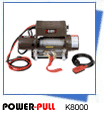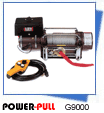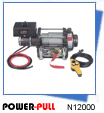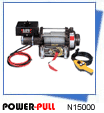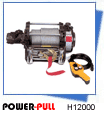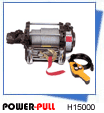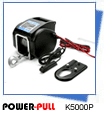如何选择绞盘
Choosing a winch may appear to be a trial and error process. Unfortunately, winches tend to be rather expensive, meaning that this is probably not the best way to go about it. What you need to do is to decide what you want from a winch. This is based on a number of factors, including the type of boat that you have and the kind of sailing that you intend to do. The one basic rule is that the larger a winch, the better it will function.
Initially, it seems that cruising boats require smaller winches than their racing counterparts. This is only partly true. While racers normally have more power to control, they also tend to have larger crews, both physically and numerically. If you don't have a gorilla-sized grinder to call upon, you'll need all the mechanical muscle you can get.
Comparison shopping for a winch (and we recommend that you do) can be a little confusing. This is largely because winch manufacturers love complicated mathematical formulas. The favorite is to use the "power ratio" of the winch as the basis of choice. Simply put, this is how many pounds of pulling power you will get from a winch for every pound of pressure that you put in. The formula is actually very simple-
2 x handle length x gear ratio = power ratio
drum diameter
Technically, this means that a winch with a 10:1 power ratio will produce 100 lbs. of pulling power for every 10 lbs. that you put in. In reality, this is only a rough guide. There are other things that need to be factored in, such as the number of turns in the sheet, the friction produced by the lead blocks, and the operation of the winch itself. However, as a basis of comparison, the ratio is useful.
Winch Size
Most manufacturers make size recommendations based on boat length. While this is useful, a better option is to use the sail area of a boat, since this is a better guide for determining a craft's power. There are also other factors to be considered. How many crew do you have? How big and experienced are they? Where do you intend to place your winch? What are you planning to use your winch for? What type of sailing are you going to be doing? How much are you willing to spend?
When you're deciding on the correct size winch for controlling your headsails, use the sail area of the working jib or the 100% genoa. The smaller sail may seem like an odd choice, but bear in mind that it's used in heavier winds, so the sheets are subjected to higher loads. You can clearly see this by taking a look at the formula for load-
Load (lbs.) = SA x V2 x 0.00431
SA is the sail area, and V represents the apparent wind in knots. Therefore, a 300 sq. ft. sail set in 20 knots of wind will produce a load of 517 lbs. Using a 5:1 gear ratio winch with a 10" handle and a 4" diameter drum, you'd need to apply 21 lbs. of pressure to the winch to sheet in the sail. You may find that your boat's requirements fall between two sizes of winch. In this case, it is always better to step up to the bigger of the two, rather than making do with the smaller model.
Winch Placement
Remember, every change of direction that a rope makes en route to the winch causes friction and reduces the effectiveness of the equipment. When placing winches, avoid twists and turns, while also making sure that the rope comes into the winch at the proper angle. This means that blocks and fairleads will be necessary. For genoas and heavier load lines, a turning block is needed to ensure the correct angle of entry to the winch. This should be between 3


